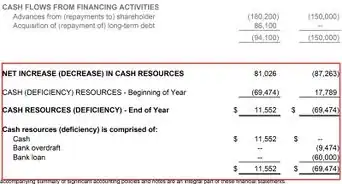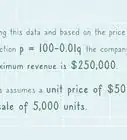This article was co-authored by Ryan Baril. Ryan Baril is the Vice President of CAPITALPlus Mortgage, a boutique mortgage origination and underwriting company founded in 2001. Ryan has been educating consumers about the mortgage process and general finance for almost 20 years. He graduated from the University of Central Florida in 2012 with a B.S.B.A. in Marketing.
There are 14 references cited in this article, which can be found at the bottom of the page.
wikiHow marks an article as reader-approved once it receives enough positive feedback. This article received 24 testimonials and 100% of readers who voted found it helpful, earning it our reader-approved status.
This article has been viewed 1,554,473 times.
It’s typically harder to get a construction loan than a regular mortgage. You’ll need to shop around, using a construction loan broker if necessary. Hire a builder with a strong reputation and gather required paperwork for your loan application. If approved, you only have to pay interest on the loan during construction. However, you’ll have to pay the loan off when the house is finished.
Steps
Researching Loans
-
1Identify the two types of construction loans. Before shopping for loans, understand the two types of construction loans on the marketplace:
- Construction only loans. These loans are short-term loans that last for a year or so. They usually have adjustable rates that rise or fall with the prime rate. At the end of the term, you must pay off the entire loan. This means refinancing into a more conventional loan that can be for up to 30 years.[1]
- Construction-to-permanent loans. This is an all-in-one option that you can use to buy land and complete your home. You then work with the lender to transition to a permanent loan after construction is completed.[2]
-
2Decide which loan type is right for you. Each type of construction loan has positives and negatives. Consider the following when deciding which to pursue:
- The application process is easier for an all-in-one construction-to-permanent loan. You apply only once. By contrast, you’ll need to apply twice to get a construction loan and then another permanent loan to pay off the construction loan.
- You’ll save several thousand dollars in closing costs with a construction-to-permanent loan.[3]
- However, your interest rate might be higher with an all-in-one loan. By the time you finish construction, interest rates could have fallen dramatically. Unfortunately, you could be locked into a higher rate with your construction-to-permanent loan.
- Generally, you also have fewer options with an all-in-one loan. If you get a construction-only loan, then you can find a permanent loan from any lender you choose, which might provide more options as the least expensive permanent lender may not offer construction loans.
Advertisement -
3Find out the requirements for applying. Each lender will have its own requirements, which you should research before applying. For example, lenders often require the following:
- A qualified builder. This person is typically a licensed general contractor with a solid reputation for building homes. By hiring a qualified builder, you show the lender that the loan is a good risk.[4] You can find a builder by contacting your local chapter of the National Association of Home Builders.[5]
- Specifications. Lenders will want you to provide floor plans and information on the materials used.
- Down payment. Lenders will prefer 20-25% as a down payment.
- Appraisal. You need to have your specifications appraised. The appraiser will find comparable properties based on the information you provide.
-
4Shop around. Most lenders offer loans but not choices. One way to get different choices is to shop at every lender and credit union in town. When you call or visit, ask for the construction loan department. If the lender doesn’t offer construction loans, then move on to the next one.
- Alternately, you can hire a construction loan broker to shop around for you. This might be a good option if you are too busy. Brokers can get loans at wholesale rates and can often get clients good deals. They can also explain your options to you and answer any questions you might have.
- You can find a construction loan broker by getting a referral from your local Chamber of Commerce or by searching online.[6]
-
5Confirm the lender is experienced in construction loans. You’ll want a lender who has handled construction loans before. When you meet with a loan officer, ask the following questions to check whether they have the necessary experience:
- How long have they been doing construction loans?
- What is the loan-to-cost ratio (LTC) required for construction loans? The range is usually 5-20%.
- Which is better: a voucher or draw disbursement system? Have the loan officer explain each to you.
- Does the bank require an interest reserve account? A contingency account? An experienced loan officer should be able to answer these questions easily.
Gathering Necessary Information
-
1Check your credit history. You’ll need good credit to get a construction loan. Pull a free copy of your credit report and review it for errors. If you find any, then dispute them with the credit bureau that has the wrong information. Check for the following:[7]
- accounts listed that don’t belong to you
- accounts incorrectly listed as in default or in collections
- the wrong balance listed
- the wrong credit limit listed
- accounts that should have fallen off your credit report
-
2Get a credit and income pre-approval before buying land. You might not qualify for a construction loan, which means you shouldn’t rush out and buy land. Instead, call the lender and ask if they can pre-approve you. This process takes only a few minutes. You provide information about your income, assets, and debts, which the lender uses to decide the amount you can borrow.[8]
- Pre-approval is a much more in-depth analysis of your credit worthiness and finances than pre-qualification.
-
3Create a timetable for construction. Construction loans are difficult to get because you don’t have a finished home to act as collateral for the loan. Accordingly, the lender will want to closely monitor the progress of construction. You should put together a timetable of construction and include it in your construction contract.[9]
- Talk with your builder about what you want. They can help you come up with a realistic estimate of how long each stage will take.
-
4Enter into a construction contract. You’ll need to give the lender a construction contract when you apply.[10] A construction contract is a written agreement between the borrower and the builder for services to be provided by the builder. You should have a lawyer review the contract before signing. A valid construction contract should include the following:[11]
- identity of the parties to the contract, including contact information
- scope of the builder’s work, such as obtaining permits, furnishing equipment and labor, etc.
- timing, such as when construction will begin, end, and the schedule of work in between
- reasons extensions of time may be granted
- payment: when, where, and how
- how plans can be changed
- warranties to fix defects in the home and what the builder will do to fix them
- how you will resolve disputes, such as mediation or arbitration
- signatures of the borrower and builder
-
5Get the necessary insurance. Your builder might or might not have all of the insurance that you need. You should check ahead of time. If they don’t, then you’ll need to purchase insurance before applying for your loan. Consider the following:[12]
- Builder’s risk insurance. This insurance covers your home while under construction, and protects against vandalism or theft of tools, equipment, and materials. Policies generally last nine months to a year and can be renewed. If your builder has this insurance, then get a copy of their certificate of insurance.
- Liability coverage. Someone might get injured during construction, in which case you’ll want coverage. Ask your builder if they have general liability coverage. You should also have a homeowner’s policy. Generally, most people get $300,000 of liability coverage through their homeowner’s policy.
-
6Gather required documents. You’ll need to submit many documents when you apply for your construction loan. Accordingly, you should gather them ahead of time. Ask your lender what you will need, but generally you should get the following:[13]
- copy of the deed to the land
- ALTA Settlement Statement (if necessary)
- contract for the land if you aren’t yet the owner
- construction contract
- builder information (name, contact information, and federal tax ID number)
- plans and specifications for the home
- certificate of liability insurance for the builder
- builder’s risk/homeowner’s policy
- building permit if builder wants disbursement at closing
Applying for the Loan
-
1Submit your application. The approval process generally takes a little longer for a construction loan than a typical mortgage. Your lender will review your credit history, income, debts, assets, and appraisal before granting approval.[14]
- After you submit your loan, the lender should provide you with disclosures that will guide you through the loan process.
-
2Receive your schedule of draws. After approval, you’ll get a draft schedule, which follows the stages of construction. You’ll request funds from the lender, and the lender will have someone check on the progress of the construction before releasing the money.[15]
- You should review this schedule carefully. It should also explain what documentation you need to submit to the lender in order to get a disbursement.[16]
-
3Understand the loan. A construction loan isn’t a typical home mortgage. As you review your documents, you might not understand some items listed. Talk to the loan officer if you have questions.
- One thing you might not understand is the “interest reserve.” Generally, you will not make payments on the loan while your home is being built. Instead, you will make an interest payment on the funds disbursed.[17] This money will come out of the interest reserve, which is a sum of money set aside for these payments.[18]
- Construction loans also add contingency funds in case of cost overruns. Usually, the bank adds 5-10% of the loan balance. If you don’t use these funds, they won’t be added to your mortgage.
-
4Choose whether to lock in your interest rate. You should ask whether the interest rate will float for the length of the construction or whether you can lock in the rate upfront. Also, if you have a construction-to-permanent loan, then you should ask whether you can lock in the rates now for the permanent mortgage.
- If rates are trending upwards, you should consider locking. Before locking, check whether you will be charged a fee, which will reduce the amount you will save by locking in.
- However, if rates are moving down, you should consider letting the interest rate float.
-
5Close on your loan. If you got a construction only loan, then you will have two closings—one on the construction loan and then a second closing after you finish construction and get a permanent loan to pay off your construction loan.
- With a construction-to-permanent loan, however, you have only one closing.[19]
-
6Pay off your construction loan. Once your home is built, you can shop for a mortgage. You will have to apply and be approved for it. If you got a permanent-to-construction loan, then you’ll need to convert it. Your lender will want to see the following before the conversion takes place:[20]
- certificate of occupancy from the builder
- final title update from a title insurance company
- 100% complete inspection report
- completion and acceptance letter signed by the builder and you
- final lien waiver or affidavit signed by your builder
- homeowner’s insurance policy with the first year’s premium already paid
References
- ↑ http://www.moneycrashers.com/new-home-construction-loan/
- ↑ https://www.citizensbank.com/money-tips/mortgages/construction-loans.aspx
- ↑ https://www.newhomesource.com/resourcecenter/articles/what-is-single-close-financing-and-why-you-should-consider-it-when-building-a-new-home
- ↑ http://www.moneycrashers.com/new-home-construction-loan/
- ↑ https://www.usbank.com/home-loans/mortgage/construction-loans.aspx
- ↑ http://www.loan.com/business-loans/finding-an-experienced-construction-loan-broker.html
- ↑ http://www.nolo.com/legal-encyclopedia/common-errors-credit-reports.html
- ↑ http://www.streetdirectory.com/travel_guide/63974/real_estate/difference_between_pre_qualified_and_pre_approved.html
- ↑ http://www.bankrate.com/finance/real-estate/how-do-home-construction-loans-work.aspx
- ↑ https://www.citizensbank.com/money-tips/mortgages/construction-loans.aspx
- ↑ http://www.nolo.com/legal-encyclopedia/what-look-avoid-when-signing-home-building-contract.html
- ↑ http://www.insurance.com/home-and-renters-insurance/home-insurance-basics/building-a-house.html
- ↑ https://www.citizensbank.com/money-tips/mortgages/construction-loans.aspx
- ↑ https://www.citizensbank.com/money-tips/mortgages/construction-loans.aspx
- ↑ http://www.bankrate.com/finance/real-estate/how-do-home-construction-loans-work.aspx
- ↑ https://www.citizensbank.com/money-tips/mortgages/construction-loans.aspx
- ↑ https://www.citizensbank.com/money-tips/mortgages/construction-loans.aspx
- ↑ http://www.c-loans.com/pre_joomla/educational_pages/construction_loans/computing_interest_reserve.html
- ↑ https://www.thebalance.com/single-close-or-multiple-construction-loans-315615
- ↑ https://www.citizensbank.com/money-tips/mortgages/construction-loans.aspx
About This Article
To get a construction loan, start by deciding if you want a short-term construction-only loan, which offers a lower interest rate but only gives you a year before you have to repay the loan. Alternatively, consider a construction-to-permanent loan, which has a higher interest rate but gives you longer to complete your project and repay the loan. Then, submit an application to your lender, who will look at things like your credit history, income, and debts. After that, attend 1 closing for your construction-to-permanent loan, or 2 if you’re taking a short-term loan. For more information from our Financial co-author, including how to draw up a construction contract for your lender, read on!
-Step-1-Version-3.webp)
-Step-2-Version-3.webp)
-Step-4-Version-3.webp)
-Step-5-Version-3.webp)
-Step-6-Version-3.webp)
-Step-7-Version-3.webp)
-Step-8-Version-3.webp)
-Step-9-Version-3.webp)
-Step-10-Version-3.webp)
-Step-11-Version-3.webp)
-Step-12.webp)
-Step-13.webp)
-Step-14.webp)
-Step-15.webp)
-Step-16.webp)
-Step-17.webp)
-Step-18.webp)
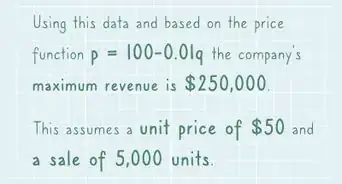

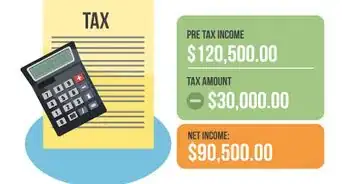

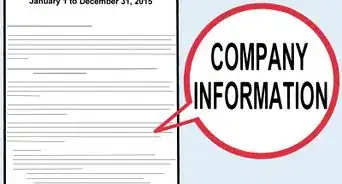

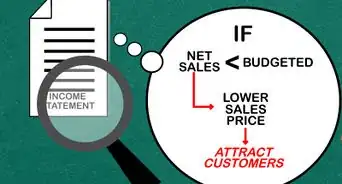
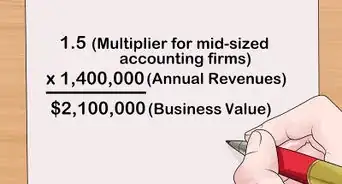
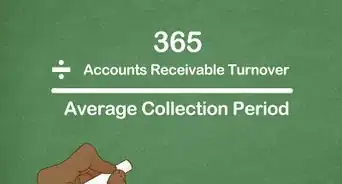
-Step-04.webp)



